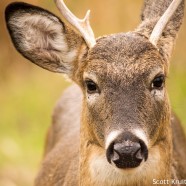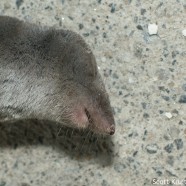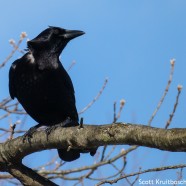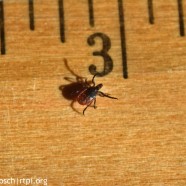Don’t feed the deer
As tempting as it may be it is NOT healthy for the wild White-tailed Deer, or you, if they are fed by humans. I can recall some winter days as a child where hungry deer were laying in our backyard for prolonged periods. The winter season can be very difficult on these friendly mammals but it is not in their best interest, health or safety to start eating anything we put out whether it is for caring about an individual, an attempt to protect other plants, to supplement the population, or any other reason. The Maine governmental website has an extremely extensive and detailed list of why we...
Read MorePurple Finch and Pine Siskin invasion
Two species have recently flooded the Northeast and Mid-Atlantic according to list serv reports, accounts from friends and my own personal observations – the Purple Finch and the Pine Siskin. The former has been unbelievably abundant in my experience, often being difficult to go outside for any length of time without seeing one in the past month. The latter, while a bit tougher to spot, has nonetheless zipped by in sizable groups and maintained their nomadic feeding habits. Just how massive are these irruptions in our region? I turned to eBird to find out the truth. Here are both...
Read MoreVenomous shrew slaughtered by cat
The following is a photo of the head and upper body of what appears to be a Northern Short-tailed Shrew (Blarina brevicauda). Where did I find this deceased and otherwise tough to spot and secretive mammal? In its natural habitat, of course – the floor of a closed garage! The half of the body you cannot see has been devoured by a cat who does not leave a locked garage and the connected basement and is never permitted to even see an open door, let alone venture outside it. It would seem this shrew decided to come inside…looking for a snack? After taking a wrong turn with its poor...
Read MoreAmerican Crow (Corvus brachyrhynchos)
The American Crow (Corvus brachyrhynchos) is one of those birds that are so well known to nearly everyone that we rarely stop to take the time to view them properly. Thankfully they are more common now in the east than they had been as the initial part of the 21st century saw significant losses to even this abundant species thanks to the West Nile Virus. Areas that were richer in species diversity saw fewer losses due to the virus, likely signaling the strength of a healthy ecosystem to battle a pathogen. Conservation needs to focus on certain species at times – as we at RTPI often do...
Read MoreCool mornings, warm bodies
Here’s an adult female deer tick that I photographed yesterday on this ruler (inches). They are actually rather large compared to young ticks, or nymphs. I pulled another one off my dog this morning. If you live near or frequent an area or habitat prone to ticks be aware that at this time of year the cool autumn mornings can lead these parasites to find any warm body they can, leaping on to mammals quickly. Thankfully you should be able to spot them if you check carefully.
Read More








